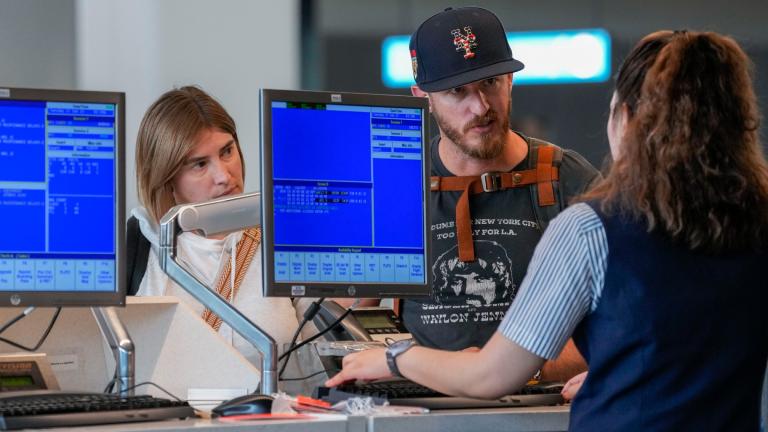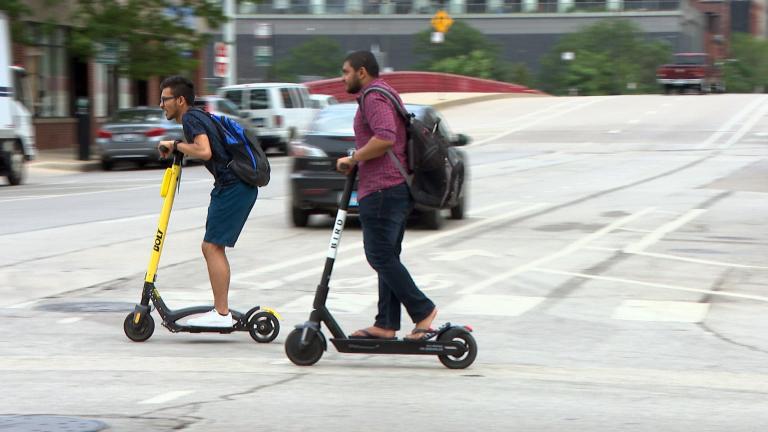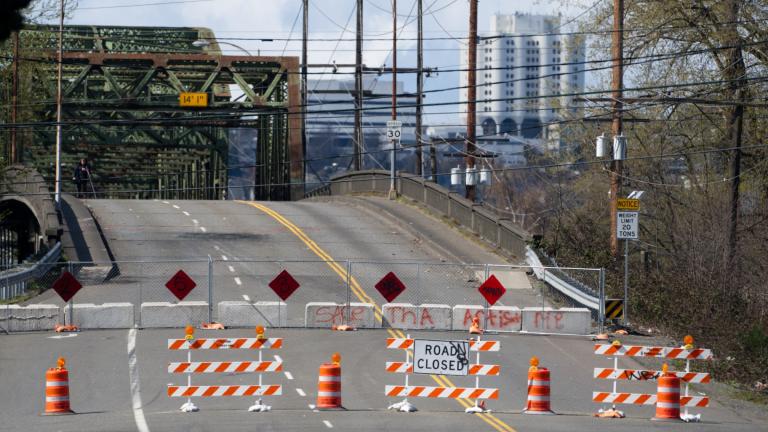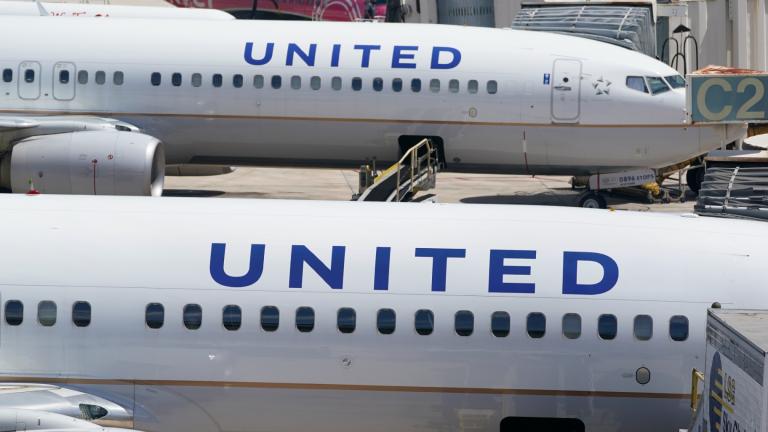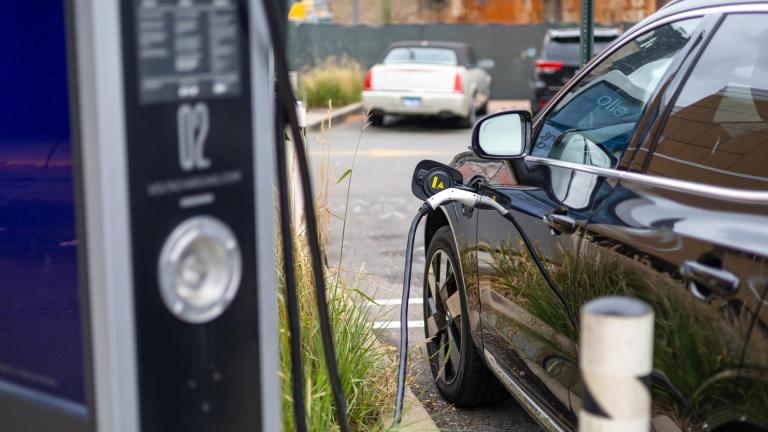The city of Chicago’s efforts to make intersections accessible to blind pedestrians are moving at a snail’s pace, according to city records.
Last March, the Chicago Department of Transportation said it was planning to install about 150 accessible pedestrian signals in 2022 and 2023. So far, only nine of those signals are actually up and running – and only eight of them are new, since one of those installations was an upgrade to an older signal.
Just 33 of the 2,846 signals the city maintains have an accessible pedestrian signal, or APS. That’s why Chicago’s still facing a class action lawsuit over its failure to make intersections accessible to the estimated 65,000 Chicagoans with vision disabilities.
“I want to go places. I want to be independent. I don’t want to depend on other people,” said Ann Brash, one of the lead plaintiffs in that lawsuit.
“I’m afraid to cross the streets. The pandemic has actually increased that feeling because I, for one, have lost a lot of the blindness skills that I had before the pandemic,” Brash said. “You need to do them every day in order to keep current.”
Brash and other advocates say the answer is accessible pedestrian signals.
When a blind pedestrian reaches an accessible intersection, they press a button. An audio alert tells you to wait until it’s safe to cross the street, and an arrow helps pedestrians orient themselves correctly. An audio alert then goes off when it’s time to cross.
In the absence of APS, blind pedestrians instead listen for traffic parallel to them to start moving, indicating a green light and a walk signal.
But in a noisy environment like Chicago, listening for parallel traffic isn’t a sure bet.
“There are so many other things going on,” Brash said. “You have musicians on the street, and you have ‘L’ trains, and you have people talking, so it’s very difficult.”
WTTW News first spoke with Ann Brash in March of last year, when a judge allowed the lawsuit over accessible signals to move forward as a class action.
At the time, the Chicago Department of Transportation said it was planning to install about 150 accessible pedestrian signals in 2022 and 2023. Since then, CDOT says it’s added just nine, one of which was an upgrade to an existing signal. It says there are more than 150 intersections where APS is in development.
The city declined to comment on pending litigation, but in a statement regarding the pace of APS installations, a CDOT spokesperson told WTTW News: “The City of Chicago fully recognizes the importance of Accessible Pedestrian Signals. The pace of installing APS is impacted by the configuration, complexity, and current conditions of the intersection, in addition to long lead times on materials and supply chain challenges.”
“The city has not taken the time to invest in accessible pedestrian signals,” said attorney Jelena Kolic of Disability Rights Advocates, which represents the plaintiffs. They’ve filed a motion asking the judge to rule without a trial.
“We are very hopeful the court will rule in our favor, and once the court does, we are hopeful that we can negotiate a proper remedial plan with the city,” Kolic said.
The city has also asked the judge to rule without a trial. In a court filing, attorneys for the city argue the Americans with Disabilities Act only requires “meaningful” access for blind pedestrians, not universally available accessible signals.
“The city seems to have taken the position that if a blind person can at all cross the street in any way at all, then that’s fine,” Kolic said. “And that is something we disagree with.”
The Justice Department disagrees, too. It’s joined the case in support of the plaintiffs. In a court filing, federal attorneys call Chicago’s complement of accessible signals “appallingly small.” They also lay out the city’s 15-year history of announcing big plans to install APS that haven’t materialized – a failure Brash calls “extremely disappointing.”
The city’s fight against the lawsuit also hasn’t been cheap.
Records obtained by WTTW News show Chicago has spent more than $1.6 million so far on outside attorneys. Based on cost estimates from the transportation department, that money could have paid for as many as 32 new accessible signals.
“It just seems that this is the right thing to do, and other cities are doing it,” Brash said.
Those cities include New York, where Kolic’s colleagues won a similar fight in 2020.
“The outcome of that suit was a remedial plan that commits New York City to retrofitting approximately 75% of its signalized intersections to include APS within the next decade, with the remainder to be completed over a course of time,” Kolic said. “It is our hope to have a remedial plan here, too, that will commit the city to doing the right thing.”
The battle is deeply personal for Brash, who was nearly struck by a bus several years ago when she started crossing a street at the wrong time.
“I don’t know of a sighted person who would willingly go across a street without a traffic light,” Brash said. “This will give us an equal footing with sighted people in that respect. And that’s what we want.”
Contact Nick Blumberg: [email protected] | (773) 509-5434 | @ndblumberg

